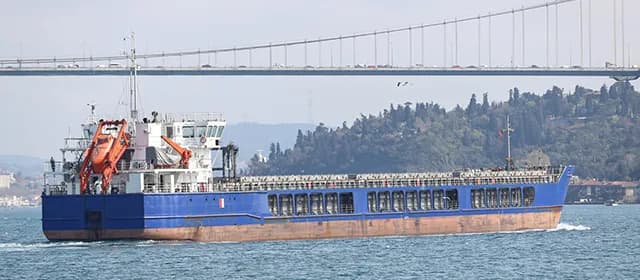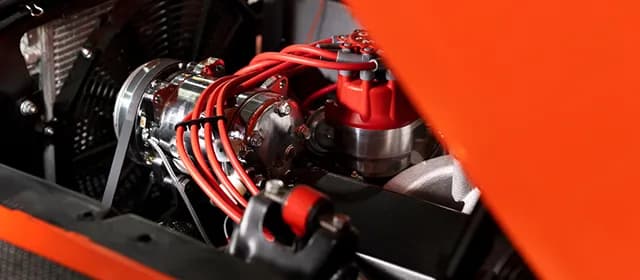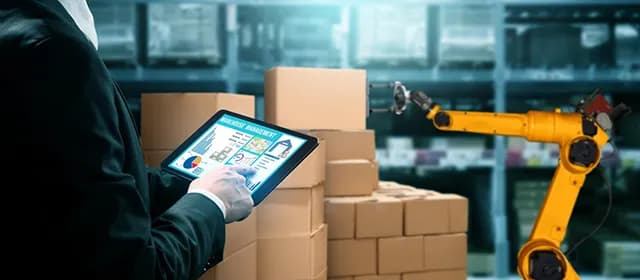You might not immediately picture a forklift when you think of construction machinery. However, they are strong lifting and moving devices that can assist with the transportation of objects both inside and outside, much like a scissor lift or telehandler.
Forklifts, commonly referred to as lift trucks or powered industrial vehicles, are essential tools used in factories, warehouses, and other workplaces. Tasks involving material handling are effective and safe because of these robust machines' ability to lift, handle, and transport heavy objects with ease and accuracy.
Let’s take a closer look into the world of forklifts, exploring their types, applications and popular models.
What is a Forklift?
Forklifts are also known as lift trucks, jitneys, fork trucks, and forklift trucks. A forklift is a vehicle that is used extensively to lift objects using a front attachment with two forks. The objects are typically placed on a wooden platform or pallet.
Moving goods and commodities that are on a pallet or other platform frequently requires the use of forks. For tasks that involve the transportation of many objects, forklifts are preferred over other machines that can be fixed with a forked attachment, such as a telehandler. According to Kings Research, the global Forklift Market is projected to grow significantly, amassing USD 147.91 billion in revenue by 2030.
Which Type of Forklift Suits Your Industry Best?
Forklifts are adaptable industrial vehicles made for effectively lifting and carrying heavy items. Due to their capacity to handle materials in a safe and controlled manner, they are used in a variety of sectors. The following are some typical uses and forklift types:
- Warehouse Forklifts: Palletized goods are loaded and unloaded from shelves and racks in warehouses and distribution centers using this type.
- Counterbalance Forklifts: The most popular kind of forklift, perfect for transferring heavy items across a flat area.
- Reach Trucks: These forklifts have extendable prongs that can reach greater heights, making them ideal for high stacking and narrow aisles.
- Pallet Jacks: They are used to move pallets on a flat surface manually or with electric aid and are also referred to as pallet trucks.
- Order Pickers: They enable operators to lift and lower themselves to collect things from raised shelves in warehouses where they are designed for order picking.
- Rough Terrain Forklifts: These include large tyres, which make them ideal for outdoor use on varying surfaces, such as those seen in agricultural and construction environments.
- Telescopic Handler: A flexible forklift with an extensible boom, these can lift and reach objects at a great height.
- Side Loader Forklifts: They are frequently employed in timber yards and the metal fabrication industry and are designed to handle long or wide loads.
- Articulated Forklifts: Having a jointed frame, it has more maneuverability in confined spaces.
- Electric Forklifts: Forklifts that are environment-friendly and are frequently used indoors or in places with strict emission regulations.
OSHA/CCOHS to Ensure Forklift Safety
Most workplace accidents involving employees and property damage can be blamed on the lack of or insufficient training. One of the best methods to prevent workplace injuries is through a thorough safety training program.
For forklift operator training and licensing, the Occupational Safety & Health Administration (OSHA) and Canadian Standards Association (CSA) have specific regulations.
Employers are required by OSHA to offer forklift operators training in vehicle maintenance and inspection under 29 CFR 1910.178(I). Operators must be older than 18 and must renew their certification at least every three years. The B335-04 (R2012) is a similar standard devised by the CSA.
Businesses must create and implement a documented program that, among other things, covers:
- Operator training
- Licensure
- Review/renewal program
Every forklift operator within an organization is required to comply with this OSHA regulation. From adjusting the parking brake to forklift speed, every facet of forklift operation must be covered.
While online courses are available, they cannot certify a forklift operator as a forklift driver. OSHA accreditation demands:
- Any combination of formal training, including lectures, panel discussions, online classes, video presentations, and written materials.
- A certified trainer gives demonstrations, after which the trainee performs exercises.
- A detailed analysis of the forklift operator's performance at work.
OSHA offers 10- and 30-hour forklift training program. The 30-hour training is targeted towards management, safety personnel, supervisors, and other people who are in charge of workplace safety, whereas the 10-hour training is focused on training the operator. Anyone who uses a forklift is required to complete one of these training program.
Top Forklift Choices on Construction Sites
In the diverse landscape of forklifts, a variety of popular products stand out, each catering to specific industries and operational needs. Let's have a look at some of the most well-known forklift makes and models.
Hyster
Hyster began as a Pacific Northwest producer of logging equipment before being established in 1929 during the Great Depression. A hoist was utilized by one of the company's vehicles to assist loggers in lifting and moving machinery. It operated under the notion that it just needed one staff to handle a large amount of material.
During World War II, Hyster equipment helped move supplies and munitions for both the American and British forces, solidifying the company's reputation. Since then, the brand has expanded globally and has become synonymous with forklifts.
Yale
Yale began as a lock business in the late 1800s. After constructing its first forklift in 1920, it remained committed to serving this industry. The company presently produces forklifts with weight capacities ranging from 3,500 lbs to 35,000 lbs. Its forklifts are designed for a variety of applications, including farm work, port and warehouse requirements, building projects, and so forth.
JCB
Joseph Cyril Bamford founded JCB in 1945 and has been a telehandler innovator since 1977. With more than 2,000 dealer locations across more than 150 countries, JCB is currently one of the top equipment manufacturers in the world.
The rough terrain and teletruk industrial forklifts are the two primary models that JCB focuses on. Its teletruk resembles a hybrid of a skid steer, forklift, and telehandler. It matches the cab of a skid steer or standard forklift while allowing the telehandler's distinctive outward reach.
The wheels also have the appearance of a typical forklift at a warehouse. The versatility of machinery and construction equipment is demonstrated by this creative design. Even a new electric teletruk model from JCB has been released!
Capturing the Essence
In the world of industrial operations and material handling, forklifts are long-standing workhorses. They are a valuable asset in warehouses, distribution centers, manufacturing plants, and other facilities because of their adaptability, efficiency, and capacity to streamline numerous operations.
These devices have advanced to satisfy the constantly changing requirements of contemporary logistics, starting with the early manual pallet jacks and ending with the sophisticated electric and autonomous forklifts of today.




